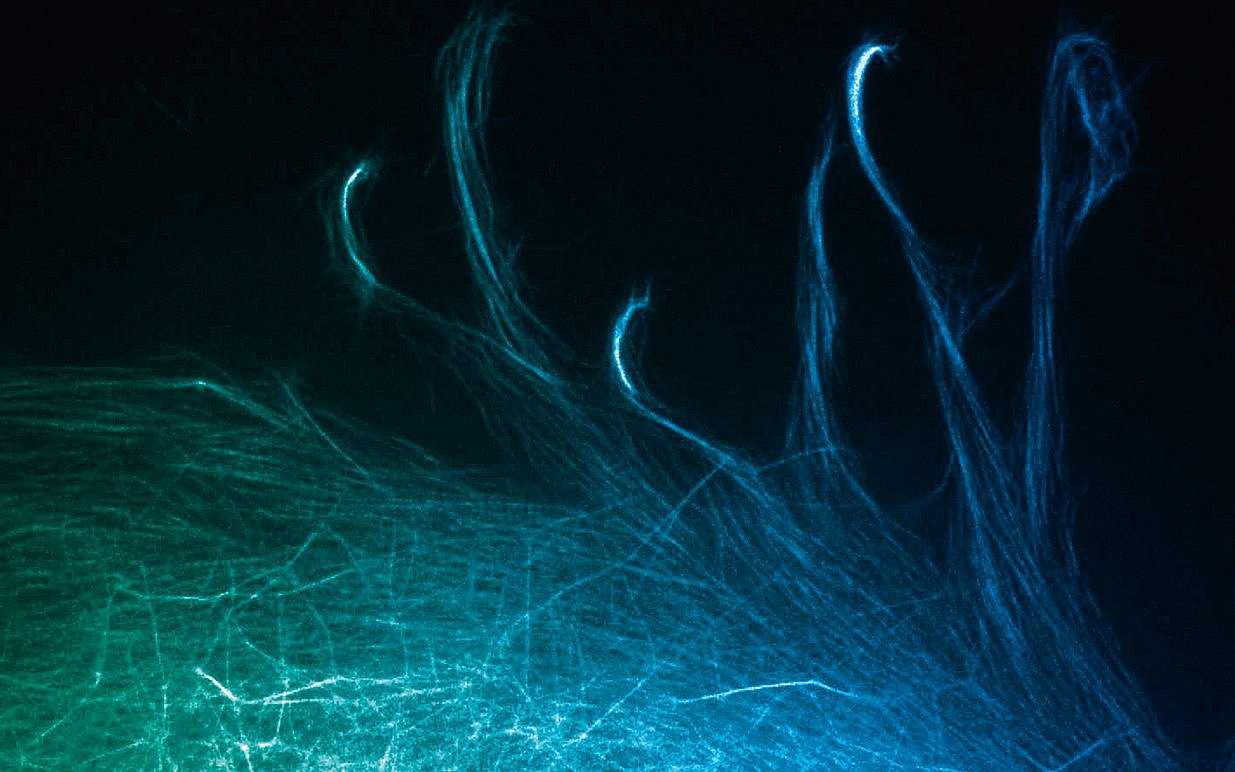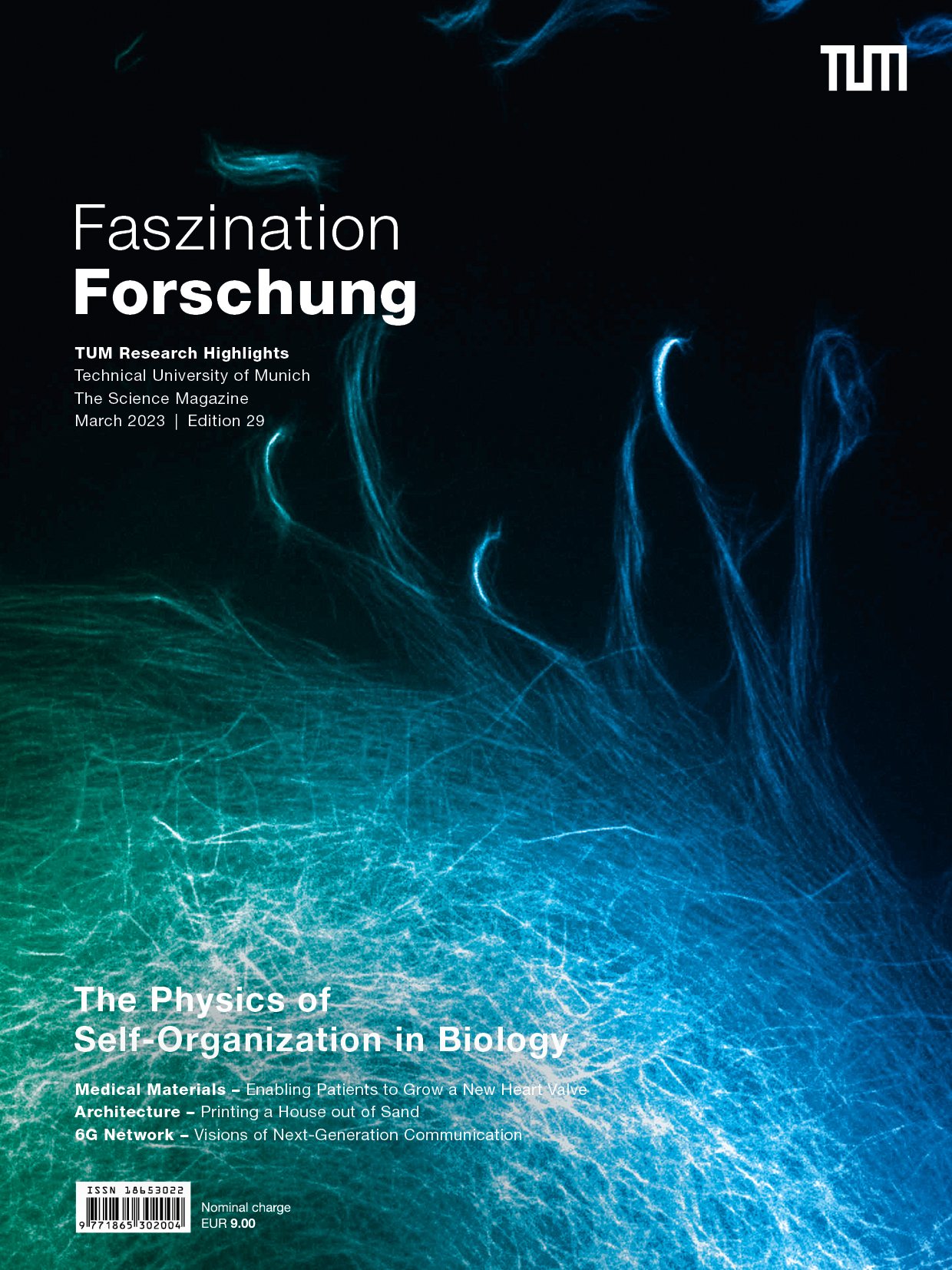“Faszination Forschung” Magazine no. 29
The physics of self-organisation in biology

Content
Innovation is about Social Change
Sustainable innovation is not just about making products and services more environmentally friend-ly, but also about making sure that we as societies can live with the consequences of innovation over the long term and in a socially just manner, says Sebastian Pfotenhauer.
The Physics of Self-Organization in Biology
Based on his discovery of how molecules can organize themselves into coordinated movement, Andreas Bausch is now working on organoids. He collaborates with researchers from various disciplines, aiming to gain a new understanding of organ growth.
Healing with RNA
The start-up RNATICS GmbH develops RNA-based drugs for treating COVID-19 and other diseases. It has secured EUR 7.5 million in funding to bring their first RNA therapeutic to clinical testing.
Enabling Patients to Grow a New Heart Valve
Petra Mela uses a special 3D printing technique to create scaffold-like implants, on which patients with heart valve disease may someday be able to grow their own healthy heart valves. The new scaffold might help overcome typical issues with prosthetic heart valves such as degeneration over time.
How the Digital Transformation is Changing Construction Sites
Additive manufacturing can bring about swift, flexi¬ble and environmentally friendly building construc¬tion. Kathrin Dörfler works on mobile robots that can be deployed directly on construction sites. Christoph Gehlen develops 3D printing techniques specifically for concrete components.
Additive Manufacturing In-Flight
Fleets of bee-inspired flying 3D printers could one day build and repair structures in-flight.
First Neutrino Image of an Active Galaxy
An international research team led by TUM discov¬ered a high-energy neutrino radiation source in the active galaxy NGC 1068.
Visions of Next-Generation Communication
It is vital that the world of science knows what future users will require of the 6G network, says Wolfgang Kellerer. He coordinates the 6G Future Lab Bavaria, which brings together 12 TUM Chairs to look into the requirements and possibilities of the 6G mobile com¬munication network.
On the Road to the Super-Battery
An in-depth look at the internal workings of batteries during charging and discharging.
In Every Issue
Editorial
Authors
Masthead
Technical University of Munich
Corporate Communications Center

